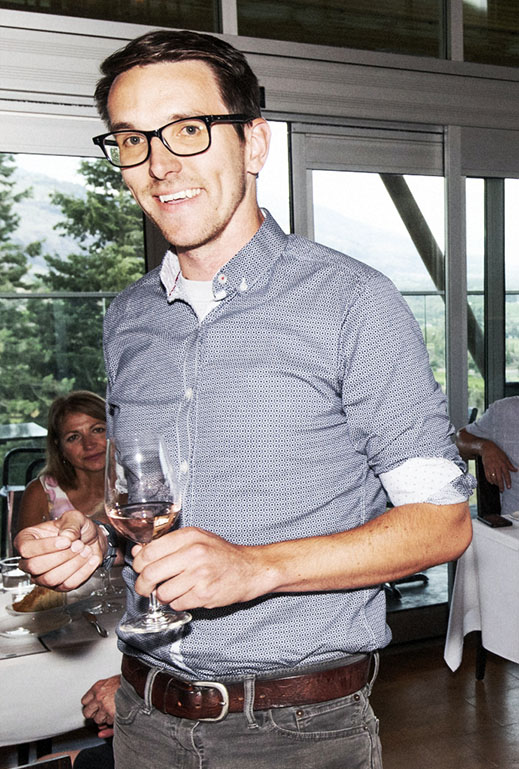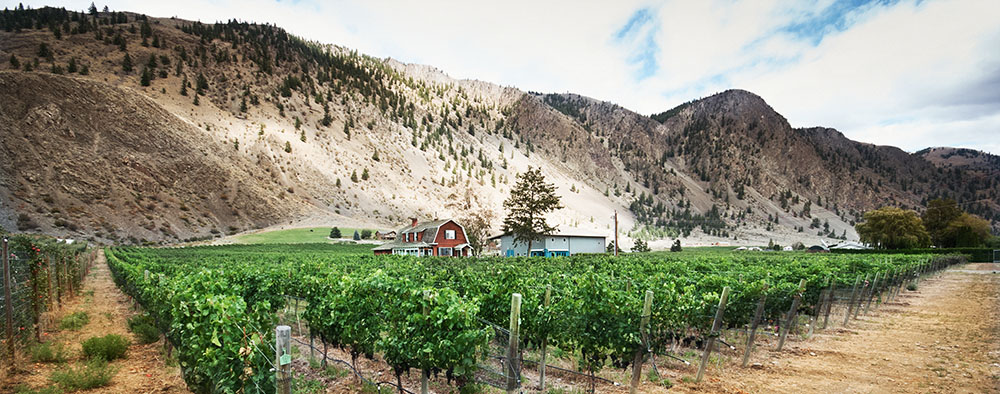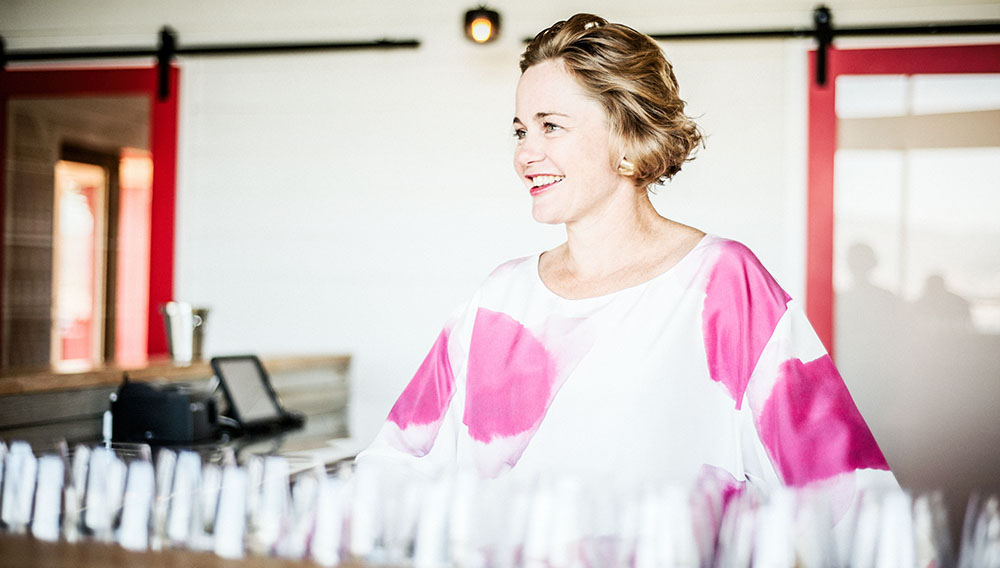Good BC Pinot Blanc has been around forever. But what was noteworthy was that the inclusion of these wines, and the quality they displayed, offered one more hint of a possible Pinot Blanc revival.
In what way? You may well ask. The answer lies, at least to some degree, in two not unrelated words: Pinot Gris. Some of us can remember when there were barely more than a baker’s dozen wineries in the Okanagan Valley. And do recall that, prior to the 1988 pull-out, Pinot Blanc was the most widely planted white vinifera.
While a few (Blue Mountain, in particular) smartly held on to their Pinot Blanc vines, most — seduced by the heady, almost unimaginable prospect (for the time) of competing with California and Australia — heard the marketers’ siren song, pulled them out and duly planted Chardonnay.
Then, in true fickle wine market style, when the ABC (Anything But Chardonnay) movement hit, the focus groups went looking elsewhere. Pinot Gris was on the rise. So, it seemed like a good idea. Apparently it was. That variety is now the province’s most widely planted white vinifera, outstripping even Chardonnay.
Pinot Gris has been good to BC. Or maybe it’s the other way around. Essentially, just about anyone in the province it seems, wherever they are — from the Cowichan to Creston and Lillooet — can regularly ripen Pinot Gris. Moreover, consumers have no problem pronouncing its name — a factor not to be overlooked. BC Pinot Gris can be truly appealing: wafting with orchard aromas and fruit driven, with a sometimes mineral and citrus toned palate and a whisper of acidity, it can easily be a pleasant seafood or grilled chicken match. In short, this grape Gris is decidedly adaptable — and ubiquitous.
However, there’s also that Italian twist, whereby marketers have decided that regardless of whether a wine leans more towards Alsace than Italy, Pinot Grigio is eminently more sexy sounding. And in doing so, they discovered that even if a wine isn’t particularly crisp and dry, who cares? Giving it an Italian accent just does wonders for sales. It’s no understatement to suggest that BC is awash in Pinot Gris, which (with a few noteworthy exceptions) tends to be made in a somewhat predictable style with a tendency to elude the qualities of either of its origins — and rarely defines the Okanagan.

pinot blanc redux?
the notes
As for Pinot Blanc, a small but determined cadre of producers, including Haywire, Clos du Soleil, Hester Creek and, of course, Blue Mountain (which has always been a stalwart), is helping to revive its fortunes with wines that increasingly deserve attention. Pinot Blanc’s higher acidity lends itself to the Okanagan in particular, if not elsewhere. And while some winemakers are adept at adding heft to Pinot Gris with neutral oak, Pinot Blanc’s more generous character appears to lend itself to better use of oak.
Former Tinhorn Creek CEO and consultant Sandra Oldfield notes: “Over two decades ago, when we were deciding what to plant in the South Okanagan, Pinot Blanc was often hard to tell the difference from Chardonnay. With Chardonnay having better name recognition, we went that route. Now, with Chardonnay styles becoming bigger, rounder and oaky, it is time to look at Pinot Blanc again. Its fruit profile is richer than that of Pinot Gris and it could find a great niche in BC as a dry, fruity, yet full-bodied white wine. If it were today, I’d seriously consider planting Blanc over Gris.”
Why seek a signature grape? Perhaps driven by a classic Canadian inferiority complex, in the last few years there’s been an informal push to define certain grape varieties as quintessentially BC. This mantra appears to define a need to identify the “hang your hat on…” kind of vinifera, in the same way that other regions do. A few contenders have surfaced, though Pinot Gris isn’t often mentioned. Plus, even when the variety was selected for the 2017 Judgment of BC, the enthusiasm among the judges was palpably muted.
But it seems the true question surrounding identity is this: How could it be possible to have just one or two definitive varieties from such a wide range of regions and sub-appellations that offer so many differing climates and terrains?
At just 4,152 hectares (10,260 acres) in total, British Columbia isn’t like other wine-producing areas around the world that cover thousands of hectares. Canada’s westernmost province doesn’t grow oceans of Sauvignon Blanc or Malbec that it needs to sell to satisfy booming export markets. In fact, BC barely has enough wine to export in the first place. Although the little it does send beyond our borders continues to make waves and often surprises first-time tasters.
BC’s challenge is that it does quite a few things well. Too many for some who suggest that it makes the province a “jack of all trades and master of none.” But standards have risen considerably in recent years, especially given the significant influx of winemaking expertise and viticultural know-how from the world over. In some ways, BC’s blessing may well be that it suffers from an embarrassment of riches.
Setting aside smaller plantings, say, under 100 acres, BC focuses on no less than seven principal white varieties: Pinot Gris, Chardonnay, Gewürztraminer, Riesling, Sauvignon Blanc, Pinot Blanc and Viognier. Of note is that, while Pinot Gris and Chardonnay have remained relatively static in the last decade, there’s been considerable growth of both Riesling and Gewürztraminer.
Wine geeks and chefs were always strong supporters of Riesling, but it took a generation of consumers scarred by Johannesburg Riesling to move on before the current surge in popularity could set in. Now — thanks in part to being noticed by the likes of Riesling messiah (and Planet Wine author) Stuart Pigott — there’s been a definite shift to crisper, more acid-driven BC styles. Led by widely acclaimed wines from the likes of Tantalus and Synchromesh, Pigott calls them “blade-runners.”
Haywire Narrative Pinot Blanc 2017, Okanagan Valley ($23)
Concrete fermented and aged in concrete for eight months. Aromas of apple and melon precede a quite creamy, textured palate, lifted by melon and tropical flavours with slightly steely edge and a hint of minerality. Well balanced, crisp acidity through a dry finish.
Hester Creek Estate Pinot Blanc 2017, Golden Mile Bench ($16)
Some fruit from old vines dating back to the 1970s. Stainless-steel fermented. Stone fruit, orchard and pear notes up front before a well-balanced palate of apple, peach and nectarine with definite mineral, a touch of spice and a lengthy, clean finish.
Blue Grouse Ortega 2017, Cowichan Valley ($21)
The Island’s flagship white variety (a cross between Siegerrebe and Müller-Thurgau) comes from 25-year-old estate plantings. All stainless-steel fermented, with extended lees contact, yielding a generous mouthfeel preceded by floral and citrus notes through a structured, juicy palate of orange and grapefruit with mineral hints through a zesty end.
Clos du Soleil Pinot Blanc 2017, Similkameen Valley ($27)
From Middle Bench in Keremeos. Whole-cluster pressed and all stainless-steel fermented, with some lees contact to add texture. White flower, pear and citrus aromas precede juicy layers of apple and citrus before a lengthy, crisp but elegant close with mineral hints and a touch of spice.

an aromatic renaissance
In the early days of BC’s wine revolution, in the 1990s, the biggest selling BC white wine in local liquor stores was Sumac Ridge Gewürztraminer. No doubt its perfumed character and juicy, off-dry style appealed to the public palate of the time. A few years on, however, Gewürz’s fortunes appear to have fallen on harder times. Sumac lost its pre-eminence and the variety was eclipsed by Chardonnay and, yes, Pinot Gris. However, with the influx of Asian flavours, as well as the increasing sophistication of regional cuisine, Gewürz appears to be enjoying a renaissance, hence the increase in plantings. Remarkably, though, it’s still not taken as seriously as it could be. Although, here again, there are signs that this BC variety is also gaining the respect it deserves.
The first winemaker to elevate the variety to the next level was JoieFarm’s Heidi Noble, who has shown what can be achieved with her top-tier En Famille series. Quails’ Gate winemaker Nikki Callaway (who recently moved to Naramata’s Laughing Stock) fine-tuned the program to highlight specific older blocks. In addition to the popular “regular” bottling that mirrors an “Okanagan style,” a far more aromatic and intensely fruited Gewürz — and definite nod to Alsace — comes from the winery’s home Orchard Block, planted in 1989. Callaway also produced, among others, the single-vineyard BMV Riesling, which she whole cluster-pressed and fermented with wild yeast in neutral oak. An interesting twist, the wine is also offered as an homage to “the Okanagan’s first age-worthy Riesling,” which was made by Jordan & Ste-Michelle using fruit from the same vineyard.
Quails’ Gate is also well into a major expansion with its 2016 purchase of part of the Stewart Brothers Nurseries, across the lake above Kelowna’s Mission District. Extensive plantings are underway at the rate of about 40 acres a year, with a total of 160 acres planned. While the majority of vines are Pinot Noir and Chardonnay, it’s interesting to note the inclusion of many Quails’ Gate varieties that were the foundation of the early industry, including Chasselas, Chenin Blanc and Gewürztraminer. No doubt these are, in part, to increase volume for the winery’s white blend. But they might also free up more fruit from older blocks in the home estate Westbank vineyards. Plans call for a gravity-fed winery to be built on the new vineyard, which enjoys panoramic views of Lake Okanagan and Kelowna.
Quails’ Gate Chenin Blanc 2017, Westbank, Okanagan Valley ($20)
From 20-year-old estate vines. Aromas of citrus, sage and orchard fruits precede a textured palate of apple and pear wrapped in juicy acidity with mineral undertones and gentle, creamy notes through a lengthy end. Good aging potential.
Fitzpatrick Ehrenfelser The Unwinder 2017 ($20)
The Fitzpatrick family maintains the roots of their Okanagan story with this varietally precise interpretation. Lifted floral orchard and stone fruits up front, before a refreshing, tropical palate of apricot, peach and guava through a clean close.
Fort Berens Pinot Gris 2017, Lillooet ($18)
Tropical top, fresh pineapple and citrus hints announce a luscious, quite plush but well-structured palate with good acidity. Orange- and mango-toned palate with a clean, stony edge and lingering, fresh finish.
Arrowleaf Cellars Bacchus 2017, Okanagan Centre ($19)
Sourced from old estate vines and from east Kelowna vineyards. Upfront floral, citrus and stone fruit notes followed by a luscious and ripe but well balanced, gently zesty and grapefruit-toned palate with a lingering citrus and slightly herbaceous end.
The View Ehrenfelser 2017, East Kelowna ($20)
Floral and mineral notes up front, followed by refreshing apple, peach and citrus notes with a lively, well-textured and zesty mid-palate through a clean end.

a wealth of opportunity
Overall, both in the Okanagan and elsewhere, a group of lesser known white varieties includes small plantings of Albariño, Auxerrois, Ehrenfelser, Siegerrebe, Bacchus, Ortega, Muscat, Roussanne, Sémillon and others. Several varieties (though by no means all) are the legacy of the Becker and Duncan Projects in the 1970s and ’80s, which laid the foundation for the modern BC wine industry. While their acreages appear insignificant, in the right hands they often produce very good results. And should not be overlooked.
In fact, some more innovative winemakers have turned these grapes into mainstays, as evidenced by: Terravista Vineyards (Roussanne, Verdelet, Albariño), Stag’s Hollow Winery (Albariño, Vidal, Muscat), Culmina Family Estate Winery (Grüner Veltliner), Gray Monk Estate Winery (Ehrenfelser, Kerner, Pinot Auxerrois, Siegerebbe), JoieFarm (Muscat) and Bartier Brothers (Muscat, Sémillon), among others. Arguably Dr. Becker’s closest collaborator, Gray Monk, in particular, strived to establish almost all of those early-ripening Germanics, as founders George and Trudy Heiss felt them to be ideally suited to the Okanagan. Almost half a century on, despite the challenges of a warming climate, and a tendency by the literati to not take off-dry wines seriously, they’ve been proven right. The same can be said for Gehringer Brothers, whose plantings tell a similar story. Hopefully, Gray Monk’s new owners will not only respect but also nurture that heritage.
While there may, indeed, be valid market-driven arguments for identifying one or two varieties within a region, or even several neighbouring regions, an equally strong, opposing point of view is also valid. As BC moves from adolescence into maturity as a wine region, its winemakers are really only just beginning to discover the rewards of longer established plantings, including those lesser known varieties. And, perhaps, only now unearthing the potential of what those pioneers envisaged.
Bartier Bros. Pinot Gris 2017, Black Sage Bench, Okanagan Valley ($22)
From a gently sloped, granite and limestone, west-facing vineyard on the lower side of Black Sage Road. Lifted orchard-fruit aromas and tropical notes precede a keenly focused and structured palate of citrus and apple with a hint of honey supported by mineral undertones and a lingering, zesty close.
Culmina Unicus 2017, Okanagan Valley ($27)
The Okanagan’s original, first planting of Grüner Veltliner, established in one of the region’s highest altitude vineyards, continues to evolve with decidedly “terrassen” quality. Aromas of citrus and stone fruit precede a grapefruit- and mineral-toned palate, with a distinctive sniff of white pepper becoming more apparent.
Rocky Creek TLC 2017, Cowichan Valley ($22)
A blend of Madeleine Sylvaner, Viognier, Albariño, Siegerrebe and Ortega yields upfront floral and orchard fruits with tropical undertones before a mouth-filling, luscious palate of apple, peach and pineapple through a clean finish.
Sea Star Siegerebbe 2017, Pender Island, Gulf Islands ($22)
From Clam Bay Farm. Lifted floral notes, a touch of rose petal (likely from the Gewürz cross) plus citrus and spice, followed by a well-structured, expressive palate of tropical, grapefruit and peach with a lengthy finish.
